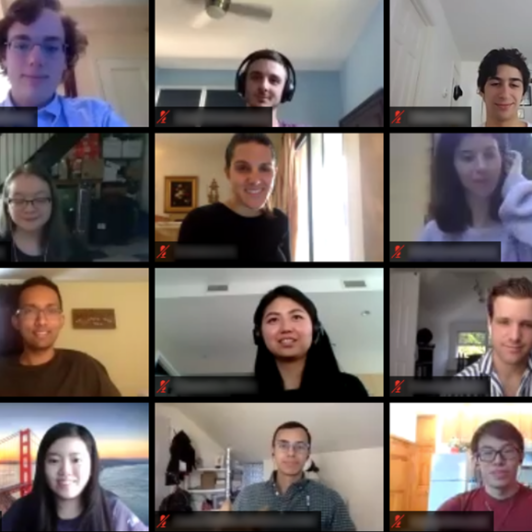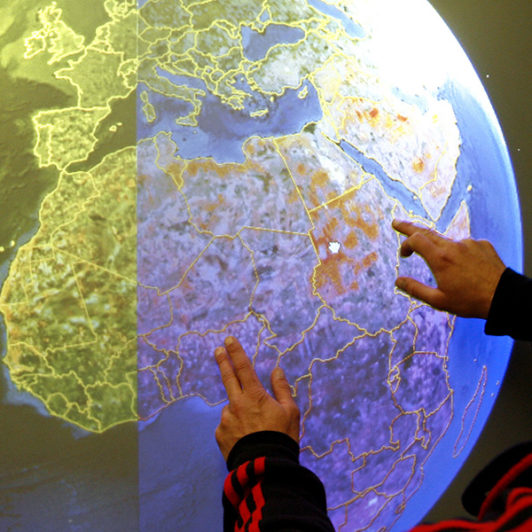Two Sigma held its inaugural Symposium in December 2020. Though conducted virtually, it was an opportunity for a group of 10 invited students to present their current research and receive feedback, as well as a venue for the students, along with distinguished professors and Two Sigma researchers, to share ideas, network, and learn from one another.
For Two Sigma, the event was also a way to give back to the wider research community, and to continue to build onto our strong culture of learning. As part of the company’s broader academic outreach efforts, the symposium illustrates how partnerships with academia are central to Two Sigma’s mission to find value in the world’s data.
The day began with a virtual coffee chat, where students and Two Sigma participants got to know each other in an informal setting. The rest of the day included talks from distinguished professors and lightning rounds in which each candidate presented on their area of research, leaving time for questions from the group.
Among the participants in the 2020 symposium were:
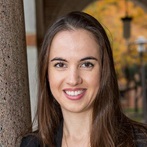 Professor Genevera Allen (Rice University)—Dr. Allen is an Associate Professor of Electrical and Computer Engineering, Statistics and Computer Science at Rice University and an investigator at the Jan and Dan Duncan Neurological Research Institute at Texas Children’s Hospital and Baylor College of Medicine. She is also the founder and Faculty Director of the Rice Center for Transforming Data to Knowledge, informally called the Rice D2K Lab.
Professor Genevera Allen (Rice University)—Dr. Allen is an Associate Professor of Electrical and Computer Engineering, Statistics and Computer Science at Rice University and an investigator at the Jan and Dan Duncan Neurological Research Institute at Texas Children’s Hospital and Baylor College of Medicine. She is also the founder and Faculty Director of the Rice Center for Transforming Data to Knowledge, informally called the Rice D2K Lab.
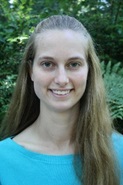 Jennifer Brennan (University of Washington)—Jennifer is a fourth-year PhD student in the machine learning group of the Paul G. Allen School of Computer Science and Engineering at the University of Washington. Her research focuses on improving scientific experimental design using techniques from machine learning and statistics.
Jennifer Brennan (University of Washington)—Jennifer is a fourth-year PhD student in the machine learning group of the Paul G. Allen School of Computer Science and Engineering at the University of Washington. Her research focuses on improving scientific experimental design using techniques from machine learning and statistics.
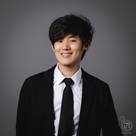 Michael Lim (University of California, Berkeley)—A doctoral candidate in statistics with a focus in robotics, Michael is interested in developing provable and efficient online planning algorithms for solving continuous space partially observable Markov decision processes (POMDPs), as well as integrating perception, learning, and control to tackle realistic robotic motion-planning problems.
Michael Lim (University of California, Berkeley)—A doctoral candidate in statistics with a focus in robotics, Michael is interested in developing provable and efficient online planning algorithms for solving continuous space partially observable Markov decision processes (POMDPs), as well as integrating perception, learning, and control to tackle realistic robotic motion-planning problems.
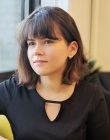 Madalina Persu (Two Sigma)—Madalina has been a researcher with Two Sigma since 2018, having interned here prior to joining full time. Madalina earned her MSc and PhD in computer science at the Massachusetts Institute of Technology, as well as her AB in Mathematics from Harvard University.
Madalina Persu (Two Sigma)—Madalina has been a researcher with Two Sigma since 2018, having interned here prior to joining full time. Madalina earned her MSc and PhD in computer science at the Massachusetts Institute of Technology, as well as her AB in Mathematics from Harvard University.
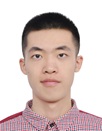 Jiahao Yao (University of California, Berkeley)—Jiahao is a third year student in the math department. He obtained his BS degree in computational mathematics from Peking University in 2018 and is broadly interested in reinforcement learning, quantum computing, and computational physics.
Jiahao Yao (University of California, Berkeley)—Jiahao is a third year student in the math department. He obtained his BS degree in computational mathematics from Peking University in 2018 and is broadly interested in reinforcement learning, quantum computing, and computational physics.
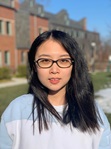 Maxine Yu (Princeton University)—A third year candidate, Maxine’s research interests include studying statistical estimation and statistical inference for models in high dimensions, designing policies for online decision-making problems based on statistical knowledge, and performing time-series analysis on extreme values of datasets.
Maxine Yu (Princeton University)—A third year candidate, Maxine’s research interests include studying statistical estimation and statistical inference for models in high dimensions, designing policies for online decision-making problems based on statistical knowledge, and performing time-series analysis on extreme values of datasets.
After the symposium, we asked these participants to tell us about their experience. Here’s what they told us, edited for clarity and conciseness.
Why did you accept the invitation to attend Two Sigma’s symposium?
Maxine Yu: It’s a very good opportunity to meet and interact with people from different fields. Giving a talk to audiences with various backgrounds and receiving feedback can help one think deeper on their research from different points of view.
Jiahao Yao: It was really interesting to learn about research topics from different people with different research backgrounds. They were also so kind to answer my questions. Prof. Allen provided a lot of food for thought when talking about probabilistic graphical modeling and illustrating how it could potentially make an impact on finance.
What did you learn from interacting with the other participants?
Madalina Persu: Attending the PhD Symposium was a fun way of getting up to speed with the latest developments in a wide range of academic fields. The talks were engaging and offered me the chance, as a researcher, to learn about new topics in a very efficient format. Two Sigma’s culture is focused on learning, and it is great to have such events where we closely partner with academia.
Michael Lim: I was introduced to a vast array of interesting research problems across different fields including statistics, math, EECS, and physics, and simultaneously was amazed to realize how the seemingly different and separate problems and domains could take inspiration from one another. It was refreshing to hear about other participants’ research and to think about the potential connections between our works.
The Two Sigma employees that met with us came from a wide variety of fields, which showed that there was no single path to working in finance.—Jennifer Brennan
Maxine Yu: Interacting with other participants through their talks not only broadened my knowledge in their fields but also helped me gain some new insights on my own research. Specifically, answering questions from others helped me think about my research topic in a fresh way. Moreover, I also learned a lot about collaborating with others, generating research ideas, and so on, through talking to some experienced quantitative researchers at Two Sigma.
Did attending lead to any unexpected outcomes? Was anything surprising?
Jennifer Brennan: I followed up with one of the other speakers after the symposium, and we had a good conversation about potential intersections between our research areas. We’re going to follow up in the coming months to talk more about ways we might combine our research interests; this connection was an unexpected benefit of the symposium.
Michael Lim: I had the opportunity to connect with colleagues who were not only fantastic researchers but also great friends, and who shared similar interests, such as robotics and music. It was also pleasantly surprising that the symposium felt like an academic symposium with open, constructive and friendly discussions. I believe that this reflects the academic and cordial environment at Two Sigma research as well.
What were your overall impressions of the symposium?
Professor Genevera Allen: I was enormously impressed with the quality of the PhD student participants! They were engaging, working on important research projects, and asked perceptive questions.
Interacting with other participants through their talks not only broadened my knowledge in their fields but also helped me gain some new insights on my own research. —Maxine Yu
Jennifer Brennan: For me, the symposium highlighted the variety of backgrounds represented at Two Sigma. The Two Sigma employees that met with us came from a wide variety of fields, which showed that there was no single path to working in finance. This was also reflected in the diversity of research areas represented by the speakers.
Summing up
Overall, Two Sigma’s inaugural Symposium was a great opportunity for outstanding researchers from a variety of disciplines to come together, share ideas, and build connections. We’re eagerly looking forward to the next one, to be held in summer 2021.
Click here to learn about additional ways Two Sigma collaborates with universities, research labs, professors, and students, including through PhD fellowships, research funding, data sharing, and more.




